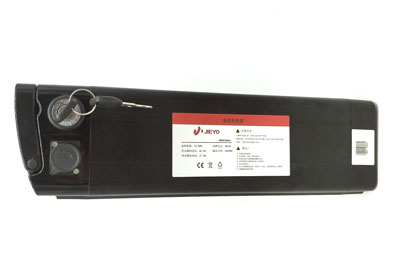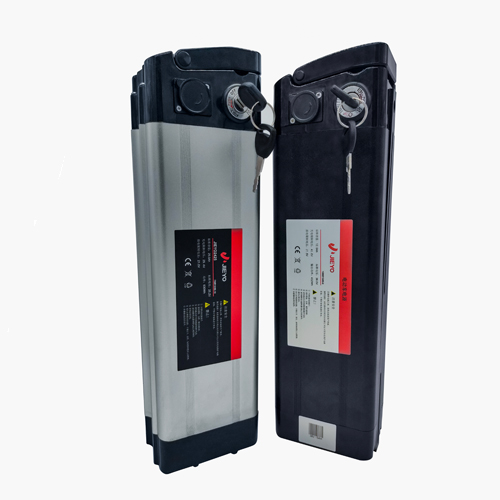Electric Batteries:
Electric bikes are all the rage. There’s a solid justification for that. E-bicycles are gaining in popularity as more people realize the several advantages they have over a standard road bike. Nevertheless, just as with everything fresh, there are likely to be a lot of misunderstandings about these rechargeable batteries bicycles. Batteries are one of the crucial parts of the e-bicycle. There are different batteries in the marketplace. Batteries affect both the speed and the length of the ride. When you decide to purchase an electric bicycle, there are a few considerations you need to give priority.
Types of electric batteries for bicycles:
The amount of pleasure and return on investment from an electric bicycle depend on its battery pack. Many users prefer to rebuild their e-bike to increase performance or develop a distinctive look. So, what kind of e-bike battery should we get? Here are some types of electric batteries for bicycles:
Lead-acid battery:
Lead-acid batteries are inexpensive and easy to replace. Lead is one of the most easily reused elements on the planet. They need routine maintenance and do not survive very long. If you’re sincere about riding your bike to work, it’s not a great choice. On the other hand, lead-acid electric batteries for bicycles have many features. Some features are here:
- Lead-acid batteries do not require any extra handling measures or cargo containers. It is because they are leakage-proof.
- Lead-acid electric batteries for bicycles have a lifespan of 3 to 5 years. You can increase the life span by proper maintenance of your battery.
- These batteries may be employed in bicycles and standby applications thanks to new technological breakthroughs.
- The high energy in lead-acid batteries provides a fantastic weight and volume ratio.
- Under appropriate settings, different manufacturers refer to a comparable number of at least 1k recharging cycles. On the other hand, exposure to extremely high temperatures and other environmental variables can dramatically cut a lead-acid battery’s lifespan.
The following is a list of some of the elements that affect the battery lifetime:
Extreme temperature:
Temperature extremes are not equal to the resilience of lithium-ion batteries, which can withstand extremely high and low conditions. The chemical that Flux Power uses, which is known as lithium iron phosphate, is highly durable. To extend the battery’s lifespan and make it suitable for use in environments with low temperatures, we even provide warmers for batteries.
Inadequate capacity:
How you keep the battery can affect how long it will last. Keep your battery in a calm place with the half charge when you are not using it. For example, if you are positioning your battery for a long duration, it is essential to check on it once every month or two. Give it a recharge of up to 50 percent of its capacity if it falls below that level.
Heavy cycling:
The amount of times a lithium-ion battery is charged and discharged can have an effect on its lifespan. In contrast to other rechargeable batteries, lithium batteries benefit from receiving partial charges since it helps to extend their lifespan.
Nickel-cadmium (NiCad) Electric Bike Batteries:
When compared to weight for weight, nickel-cadmium (NiCad) batteries have an immense density than lead-acid batteries, which is an essential factor when purchasing an electric bicycle. On the other hand, nickel-cadmium is a pricey metal, and cadmium is a toxic contaminant that is difficult to recycle. Regardless of the cost, they are not a recommended sort of battery in any circumstance. Some characteristics of nickel-cadmium are underneath:
- 1.2-volt primary electric batteries for bicycles that operate on alkaline chemical reactions have an energy capacity approximately twice that of lead-acid batteries.
- Pocket equipment and other consumer devices were feasible for the first time of their size and higher speed discharge capacity.
- To limit electrolyte losses and increase the usable life of the cells, nickel-cadmium electric batteries for bicycles are stored airtight and use a recombination mechanism.
- The recharging process is very temperature-dependent. It means the battery will cool down during charging.
- You can keep a nickel-cadmium battery without risk of harm in either the charged or discharged condition.
Lithium-ion (Li-ion) Electric Bike Batteries:
It is a new form of battery that does not guarantee to be superior to the Li-ion rechargeable batteries in terms of cost, weight, or range of functions. Nevertheless, it may be in different designs and accommodate many equipment and additional spaces, such as “the triangular space of bicycles.”. Some benefits of lithium-ion are here:
Eco-friendly:
Lithium-ion batteries are more environmentally friendly than other kinds of cells, including lead-acid and nickel-cadmium (NiCad) batteries. These batteries are eco-friendly because of the comparatively low quantities of hazardous heavy metals. Even though Li-ion batteries are far safer than many other kinds of batteries, they still need to be recycled; thus, you should never throw away old batteries to your other trash.
Easy to carry and condensed in size:
The lithium-ion battery is lightweight because the electrodes (carbon and lithium) are lightweight. These batteries weigh approximately the same as lead-acid batteries (about 6-7 kilograms) and have more energy than lead-acid batteries (typical 51Ah lithium-ion batteries weigh about the same as 24Ah lead-acid batteries). Lithium-ion batteries are useful in helmet flashlights. It can enhance the light and duration without increasing the rechargeable battery weight.
Higher energy intensity means a punch:
High-energy lithium-ion batteries are possible because of the highly explosive element’s capacity to reduce and absorb significant quantities of energy. Lithium-ion batteries may last considerably longer between charges than traditional battery packs while still delivering the same level of power and efficiency.
Conclusion:
Electric batteries for bicycles play a crucial role in bicycle performance. Chose the batteries that go best with your electric cycle. Lead-acid batteries are affordable and effortlessly available. Nickel-cadmium batteries have a coulombic effectiveness of greater than 80 percent during rapid charging, but this effectiveness might fall to less than 50 percent during charging. Lithium-ion batteries are ideal for attaining maximum rate charge/discharge. You can buy high-quality batteries from Y&J technology. They are good at providing batteries with superb quality.



